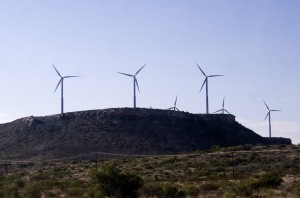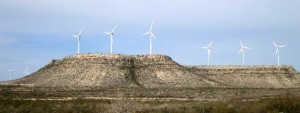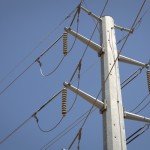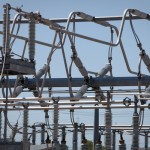Price of Wind Energy Goes Down in Texas

Photo by Lizze Chen for KUT News.
Wind turbines provide a sustainable source of energy in that they don't emit carbon dioxide or require water. Photo by KUT News
You thought you might never hear it, but wind power is becoming a formidable price competitor with fossil fuels in Texas, and Austin’s public utility is revamping its programs to suit.
In the year 2000, Austin Energy unrolled a program giving consumers the option to fund wind energy development and the city became a recognized leader in energy innovation.
The GreenChoice program let homes and businesses pay slightly more for their power and buy directly from wind farms, hoping to finance and encourage development.
It worked so well that, by 2009, it was in trouble, and the program was scaled back. Texans in Austin and beyond were demanding more wind energy than power lines could carry, and clogged transmission infrastructure sent prices skyrocketing.
When GreenChoice premiered, consumers opting for wind energy could lock into a ten-year fixed price just six cents per kilowatt-hour more than the standard cost at the time. By 2009 the difference had risen to $2.05, due largely to transmission overload.
The revamped program reflects the new reality of wind power in Texas. How much more per kilowatt-hour are GreenChoice customers asked to pay today? Just one cent.

Mose Buchele/StateImpact Texas
Wind turbines in West Texas help produce record amounts of electricity for the state.
That’s thanks to almost $8 billion in publicly funded upgrades that connected the state’s western wind farms and its cities with high-volume power lines. The project opened up vast new markets for Texas’ burgeoning wind industry, allowed the easy transmission of clean energy across hundreds of miles, and brought the price of clean energy closer to that of conventional fuels.
Outside of Austin, San Antonio, El Paso and a few other places, most of Texas is a deregulated energy market where consumers can shop for power providers like they would for cable TV. Across the state, many private utilities are offering opportunities for eco-conscious customers to pay slightly more for clean energy.
 Paying for clean energy doesn’t mean that wind power is delivered directly to your house, though. Texas has a statewide energy grid – like one big pool filled by many generators – so electricity you get from power lines may come from many sources. Paying for clean energy means that wind (or solar) generators will put into the power grid as much as you take out.
Paying for clean energy doesn’t mean that wind power is delivered directly to your house, though. Texas has a statewide energy grid – like one big pool filled by many generators – so electricity you get from power lines may come from many sources. Paying for clean energy means that wind (or solar) generators will put into the power grid as much as you take out.
Austin Energy buys wind energy from eight wind farms, the oldest of which began operation in 1995. In addition the city gets power from shares of one solar field, three biomass generators, a nuclear plant, a coal plant and three natural gas plants.
The utility currently meets 21 percent of energy demand through renewable sources and plans to meet 35 percent by 2020.

